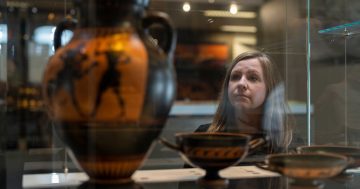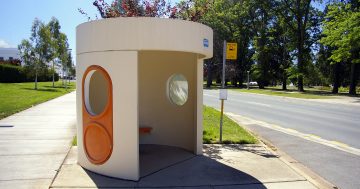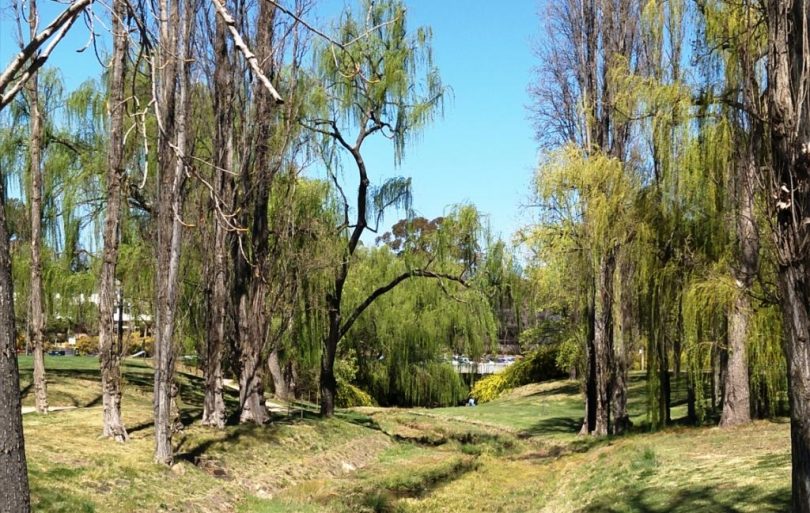
Sullivans Creek, which runs through the centre of the ANU, is edged with grassed banks and willow trees.
I am always looking for somewhere new to walk. Yes, I know we are absolutely spoilt for choice in Canberra, but I wonder how many keen walkers and walking groups know about the Aboriginal and Torres Strait Islander Heritage Trail through the ANU Acton Campus?
I recently heard about this fairly new self-guided walking trail. I picked up a copy of a small booklet in the Chifley Library about the walk, which had a great fold-out map. The walk highlighting the cultural significance of the land, the way in which Aboriginal people have used this area for thousands of years, and the continuing culture and connection to Country.
Although a student at the ANU in the 90s, I soon discovered there was a whole lot I did not know about the far reaches of the campus. Not only was I about to have a really pleasant walk, but I was going to learn a whole lot about the traditional owners of the land, see some extraordinary architecture, and end up in one of my favourite places in Canberra; the ANU Classics Museum.
Walking up Ellery Crescent for the start of my circular route, I came to my first stop in front of the starkly pruned trunk of a scarred tree that may have been marked by Aboriginal people. Standing guard over the intersection of East Road, like an Ent from Lord of the Rings, this Yellow Box is estimated to be around 300 years old and is a remnant of the grassy woodland that once covered this area. This scarred tree is significant to both the local Aboriginal community and the ANU.
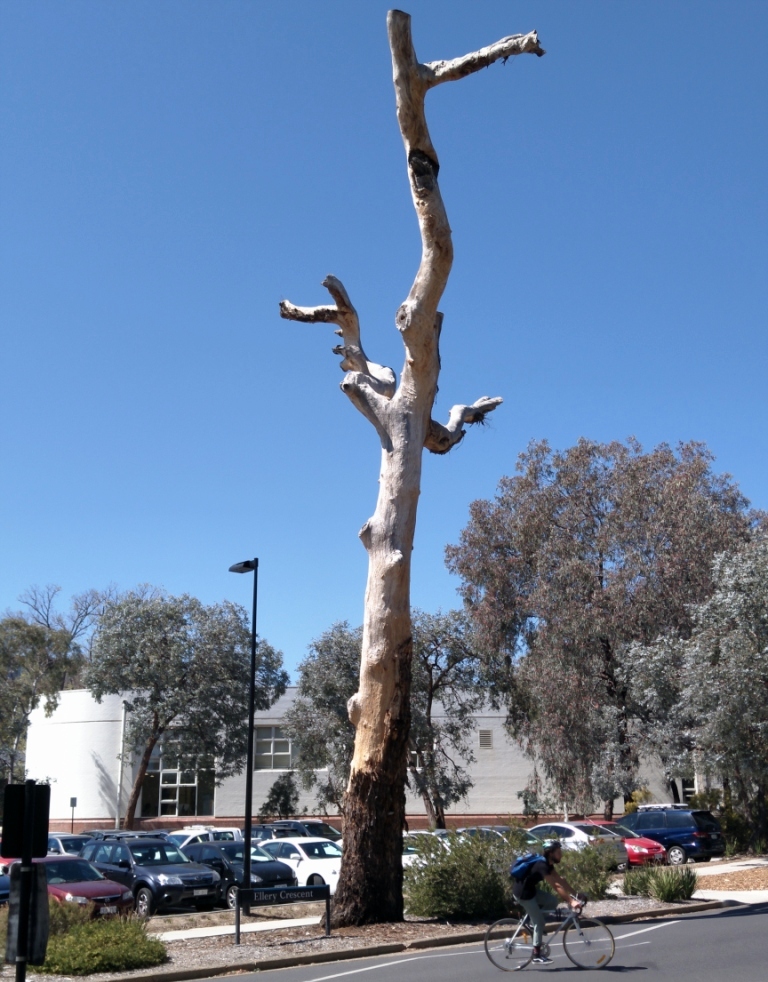
300-year-old scarred tree on Ellery Crescent is now home to a nest of bees.
Turning right into Liversidge Street, I passed the elegant and always interesting National Film and Sound Archive and took a slight detour to see if there were any ducklings on the moat of the Shine Dome. This beautiful copper dome is a wonderful part of the architectural heritage that exists in this unspoiled part of the Capital.
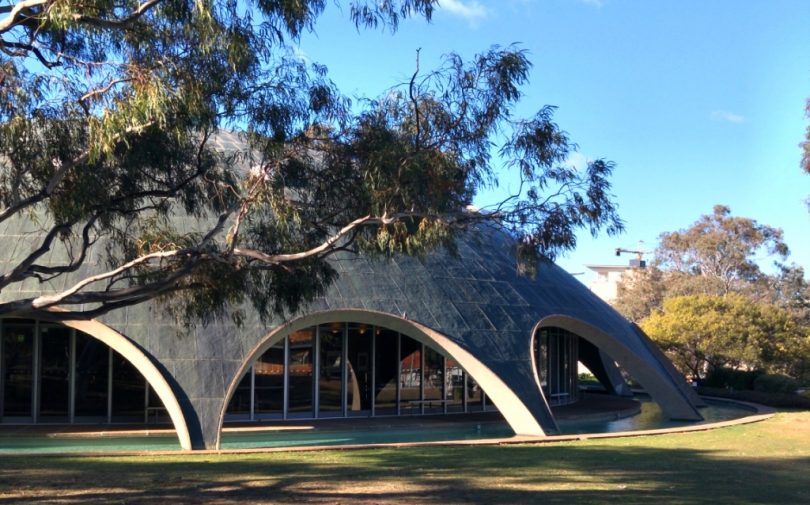
The Shine Dome has been loved by generations of school children and for many is still known as “The Martian Embassy”.
Towards the end of Liversidge Street, I turned right into the grounds of Old Canberra House; one of Canberra’s earliest buildings, still elegant, and also home to the excellent Ivy and The Fox cafe. I always stop to admire the large Cedars of Lebanon, planted in 1914 by Earl Grey.
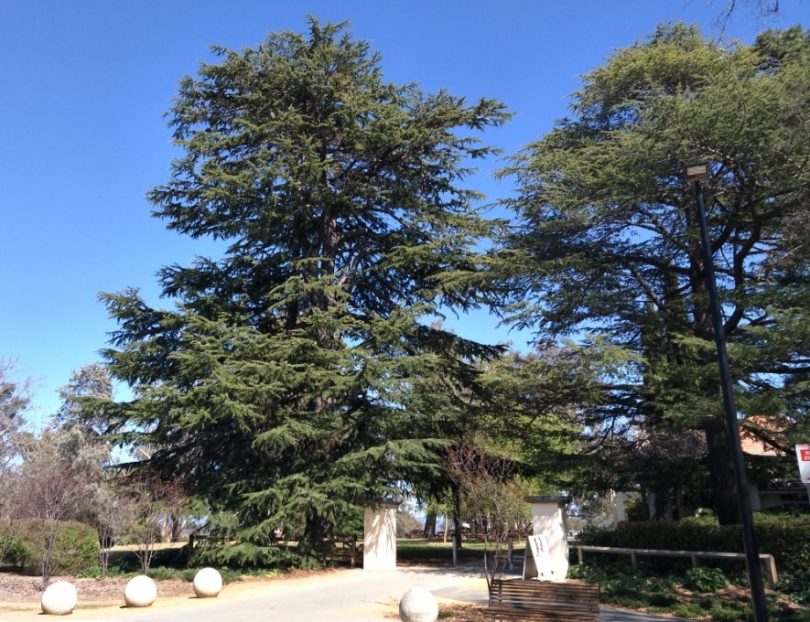
Old Canberra House overlooks the Acton Grasslands.
These trees on the edge of the beautiful Acton Grasslands which run down to Lake Burley Griffin, are of national significance and give us a glimpse of what the landscape of Acton was like thousands of years ago. This is also the location of a number of significant contemporary sculptures in the International Sculpture Park which really is worth a separate article. The walk down the hill to the Lake is easy, with wonderful views of a part of unspoiled lake foreshore. It is important to stick to the grassy paths as this area is a fragile ecosystem.
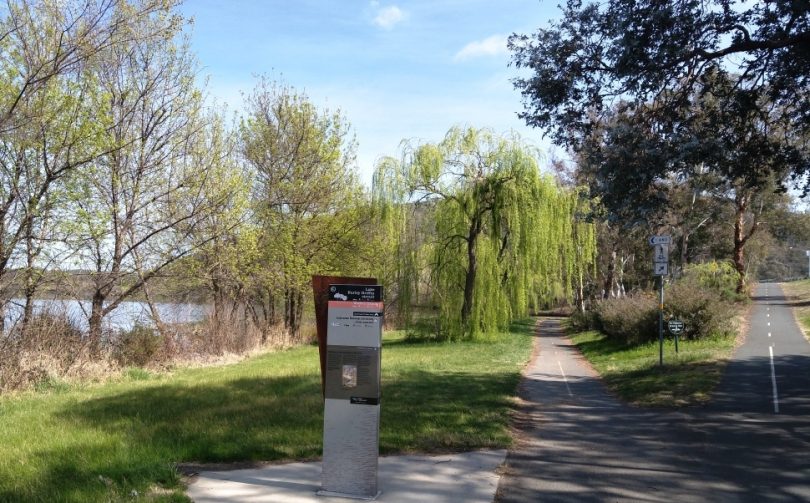
The path along the side of the Lake is well-marked and it is possible walkers might see Bogong moths and frill-necked lizards.
Sadly, the flooding of the Lake in 1964 submerged a series of limestone caves, reported to contain early Aboriginal rock art and ceremonial sites.
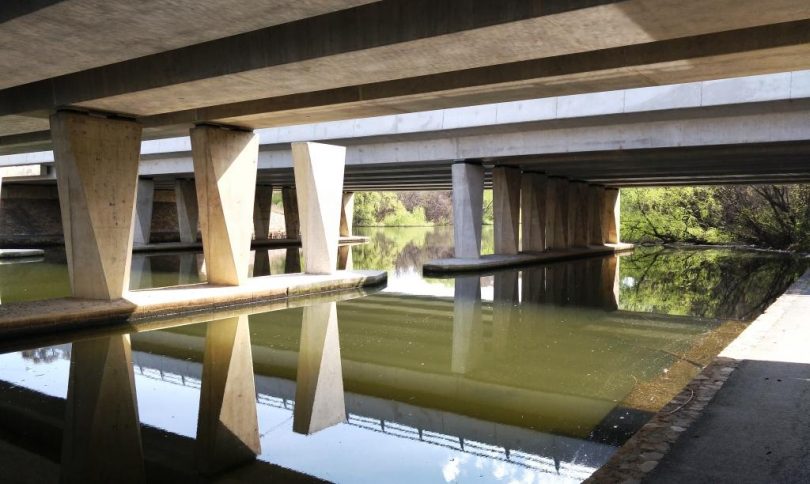
Sullivans Creek opens into the Lake under Parkes Way and platypus sightings are possible. Turning right from the foreshore, the path follows Sullivans Creek back to the centre of the University. The waterway holds significant cultural value to the Aboriginal people of the Canberra region. The flowing of water was integral to survival, as it sustained abundant resources including fish, birds, platypuses, turtles, water rats and numerous reptiles.
Taking a slight diversion, I find another architecturally inspiring building. The John Curtin School of Medical Research, designed by the Melbourne-based Lyons Architecture, features a dramatic zigzag facade and elevated terraces.
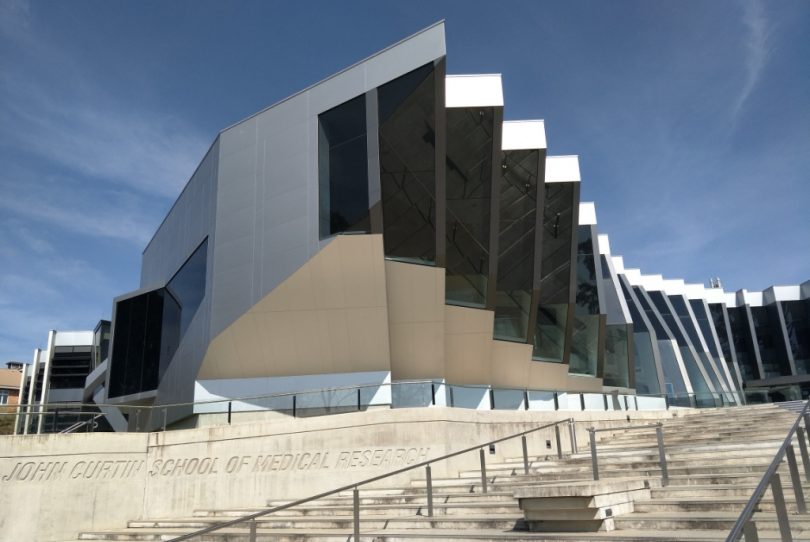
John Curtin School of Medical Research, designed by Lyons Architecture.
This part of the University is quiet and the soft spring foliage of the creek-side willows softens the landscape and provides peaceful corners for students to get away from busier parts of the University. As well as abundant birdlife, there are kangaroos, possums and the odd lizard that probably frighten a few unwary students.
At the time of writing, the area around the Union Court was undergoing substantial reconstruction. Detours were well signposted and I soon found my way to the Pop-Up Village with all it had to offer.
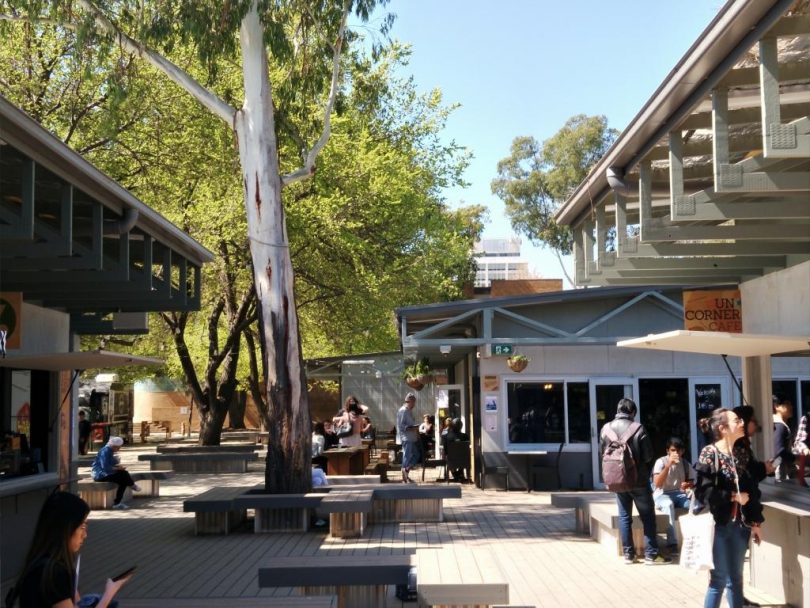
ANU popup village with Brodburger, cafes and a very good bakery.
The final stop on my enjoyable circular walk was the A D Hope Building to visit the ANU Classics Museum. Established in 1962, it displays a range of items that provide fascinating insights into the cultural practices of the ancient Greek and Roman worlds. Generously supported by the ANU, the treasures in this unique mini-museum have been lent by the National Gallery of Australia, the Parliamentary Art Collection as well as donations from philanthropic individuals. Strongly supported by the Friends of the Classics, there are monthly guided tours, with the next one due on Friday 13 October at 12.30 pm. My favourite showcase is the collection of pottery from Paestum; a pre-Roman city built by the Greeks south of Naples.
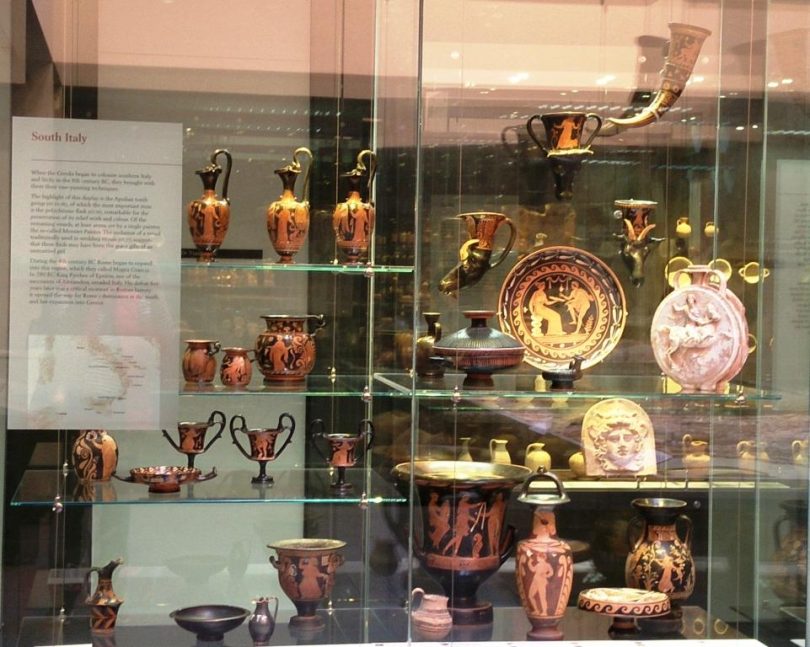
These beautiful artefacts come from the south of Italy.
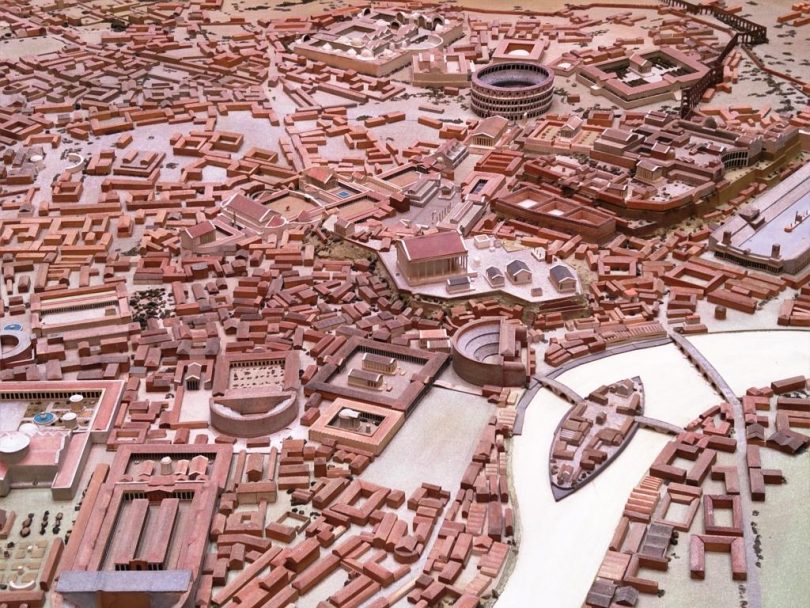
Spot the Colosseum! This scale model of ancient Rome shows the centre of Rome at the end of 2nd century AD. It was created by Errol B David OAM in 1976, and I can see it was a true labour of love.
The fascinating museum collection spans the Mediterranean and beyond, featuring examples of ancient art and objects of daily life from Greece and the Roman world, including Egypt and the Near East from 1500 BC to 500 AD. 3,500 years seems like a drop in the ocean when compared to the ancient Aboriginal culture I have experienced on the heritage trail, but nonetheless, it is an experience that always leaves me in awe. Lucky to live in Canberra? We certainly are.

Marble portrait heads of Roman nobility.
This covers the places in the ANU that are my favourites. What I really love about Acton is you don’t have to be enrolled as a student. The campus is available to everyone!
Do you have memories of places at the ANU that you loved? Please share in the comments section below.
What you need to know:
A copy of the Aboriginal and Torres Strait Islander Heritage Trail booklet can be picked up in the Chifley Library, which is a great place to start your circular walk. The project was supported by funding made available by the ACT Government under the ACT Heritage Grants Program.
The ANU Classics Museum is open weekdays except for public holidays.
Visitor parking at the ANU is in high demand. Parking over in the City West Carpark is an option and some metered on-street parking is available.
There are a number of good cafes right through the University, but to experience the buzz of undergraduate life, the Pop-Up Village is a great place to relax.
All images by Maryann Mussared












